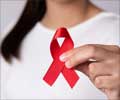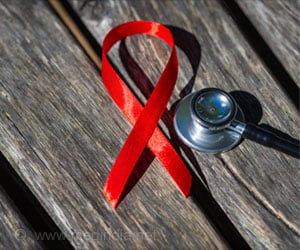Scientist said, the world's largest experiment using gene therapy to combat the AIDS virus has yielded a major advance .
Scientists said, the world’s largest experiment using gene therapy to combat the AIDS virus has yielded "a major advance".
Data from an advanced phase of the test process confirms that the quest to use transplanted genes to roll back the human immunodeficiency virus (HIV) is valid, they said.Doctors led by Ronald Mitsuyasu of the University of California in Los Angeles recruited 74 HIV-infected volunteers for the experiment, whose results are reported online by the journal Nature Medicine.
Half the group were given blood stemcells that had been infiltrated by a crippled virus containing a key gene, while the other were given a harmless lookalike substance.
The gene encodes something called an RNA enzyme, or ribozyme for short, a small molecule that like a spanner thrown into a machine, is intended to block HIV from replicating once it infects a cell.
Stemcells are progenitor cells, which means that when they replicate, future generations of those cells will carry the same genetic code.
The goal was to see whether these novel stemcells, by being shielded from HIV, would survive the body’s immune defences and whether HIV, denied a haven for reproduction, would retreat.
But at the 100-week mark, there was encouraging news: in the gene group, the viral count was significally lower. And the count of CD4 cells immune cells that are depleted by HIV was higher.
None of the gene group experienced any adverse reaction to the therapy.
The treatment "is safe and has efficacy, albeit modest," the study says.
"It shows the potential of the gene therapy approach for the treatment of HIV and represents a major advance in the field... [it] can be developed as a conventional therapeutic product."
Gene therapy arose in the latter years of the Nineties as a golden dawn in medical research.
It conjured a vision whereby a gene, slotted into cells, would either correct a flawed gene that caused disease or, as in the case of the OZ1 trial, block progression of a pathogen.
But the prospects suddenly darkened when an 18-year-old American, Jesse Gelsinger, tragically died in an experiment in 1999 to reverse a rare metabolic disorder. In several other incidents, gene-based treatments caused leukaemia.
Amid a tightening of regulatory oversight, gene therapy has only recently yielded what appears to be its first cures, reviving the immune systems of children with severe combined immunodeficiency, or SCID.
In the field of HIV gene therapy, scientists are exploring more than half a dozen avenues for delivering genes to thwart the AIDS virus.
If HIV gene therapy works, doctors hope patients may be able to scrap, or at least reduce, their regimen of antiretroviral drugs.
These powerful compounds can have toxic side effects, develop viral resistance and have to be taken for the rest of one’s life.
In an interview with AFP, Mitsuyasu said this experiment was a Phase II trial in the long, three-phase process to test prototype treatments for safety and effectiveness.
He said he would not put the technique to the final, third phase of the process. Instead, the team would learn from its experience, modify the technique and start again with tests on a smaller group of volunteers. Mitsuyasu was upbeat.
"I think it gives some hope to this approach being used in HIV and perhaps in other diseases as well, in cancer and congenital defects where we know that there is a gene that might be replaced or fixed," he said.
"It’s a positive finding for the field, and should move the field forward."
Source-AFP
ARU/L
 MEDINDIA
MEDINDIA



 Email
Email




